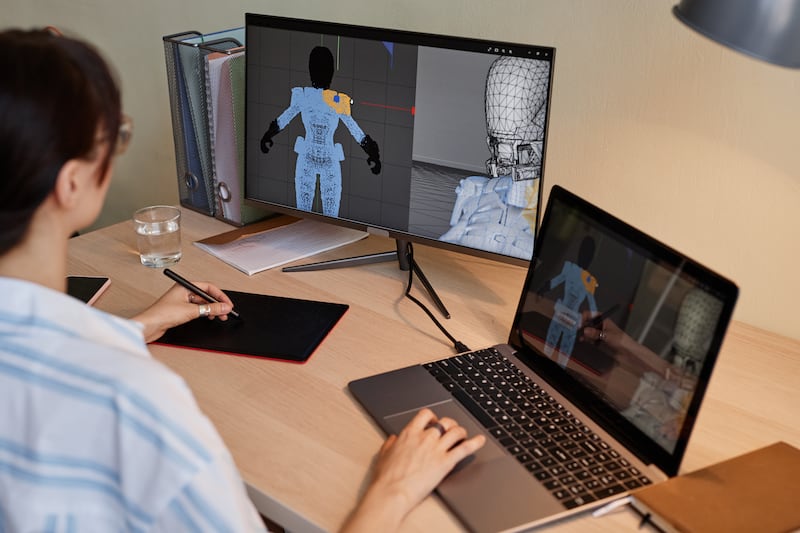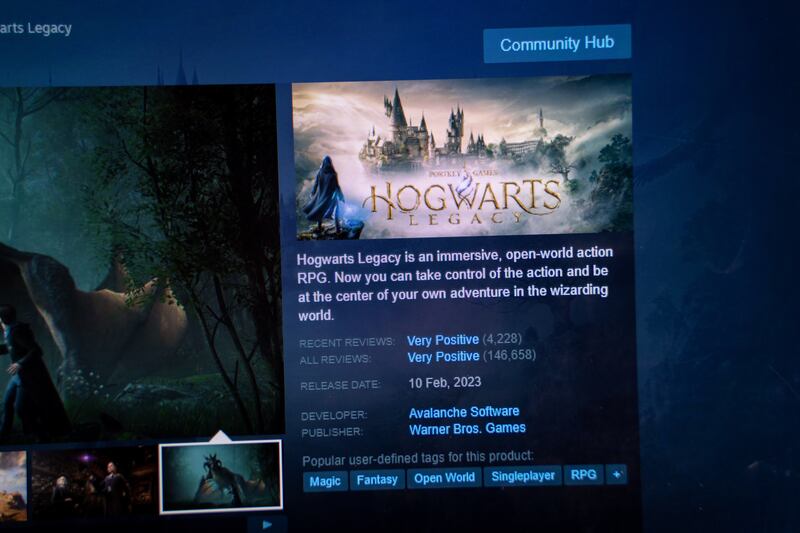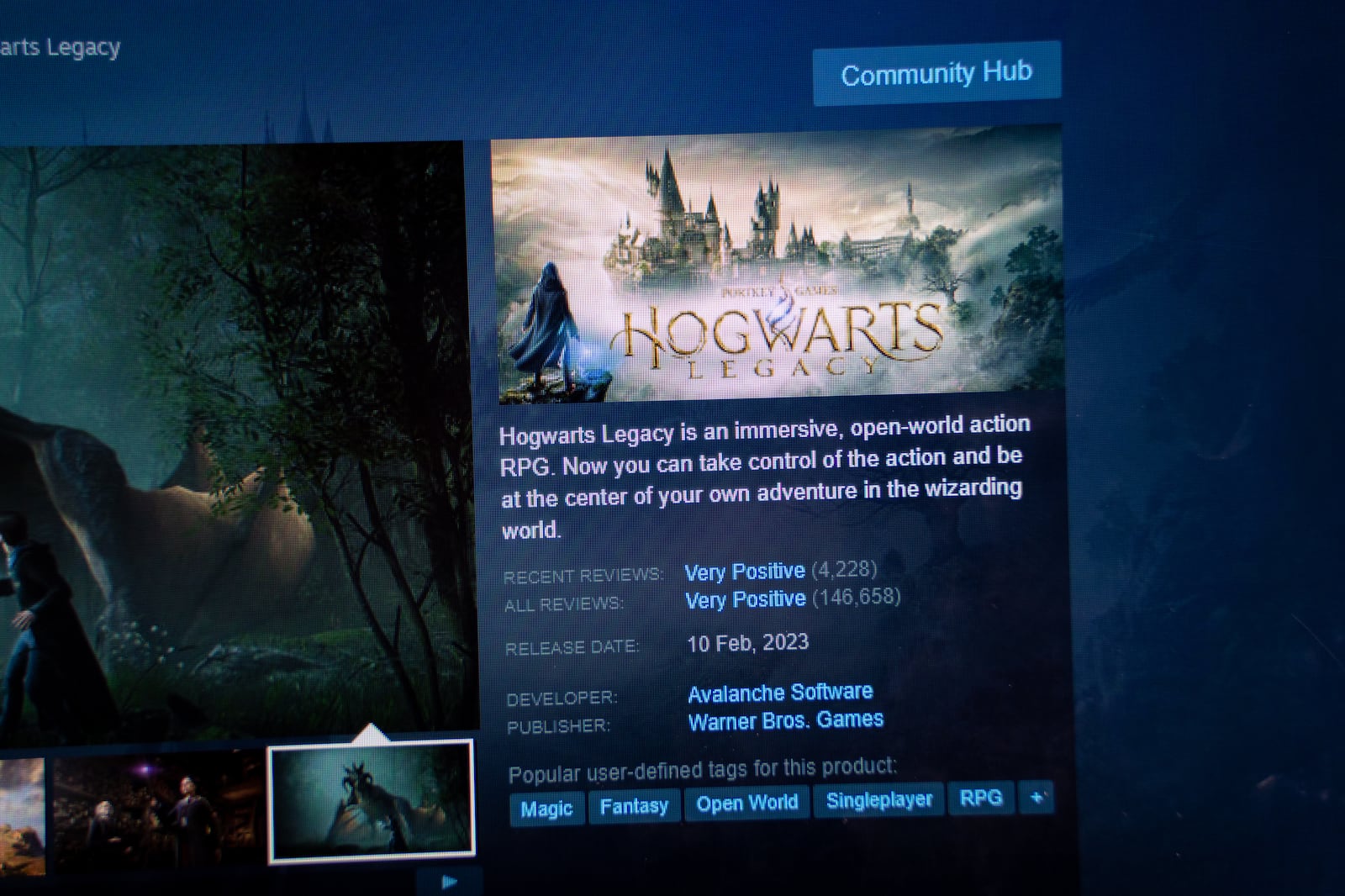This story appears in the April 2025 issue of Utah Business. Subscribe.
According to the Entertainment Software Association’s annual impact report, the American video game industry generated over $101 billion in economic impact and maintained over 350,000 jobs in 2023. It’s an industry that has shown steady growth over the years, and Utah is shaping up to be a major contributor.
CNBC reported that Utah’s video game revenue has increased by 230 percent over the past decade, netting the local economy $2.3 billion in 2024. On top of that, it’s estimated that Utah’s video game revenue will expand to $4.5 billion by 2029.
There are many contributing factors to Utah’s continued growth in this particular industry, but chief among them is the existence of the Utah Division of Games at The University of Utah (The U).
Utah Division of Games Chair Michael Young helms an academic department that boasts the eighth-largest major on The U’s campus. Under Young’s leadership, the Utah Division of Games has been recognized by Princeton Review and U.S. News as one of the best video game design programs in the country.
“We’re going through a significant amount of growth,” Young says. “We started teaching games classes in 2008 and quickly progressed to offering game-focused work inside existing degrees here on campus. Today, we have about 1,000 students enrolled.”
A proud past
Even before video games became big business, The U had been involved with several notable advancements in the tech industry. “The University of Utah was the birthplace of modern 3D graphics,” Young says. “In the ’50s, ’60s and ’70s, the computer science department here at The U was one of the early things that set us on the map in terms of graphics.”

One particularly notable attendee of The U’s computer science program was Edwin Catmull, who co-founded Pixar after getting his Ph.D. In addition to Catmull, video game luminaries such as Nintendo of America President Doug Bowser and Atari founder Nolan Bushnell are also alums of The U.
With a pedigree like that, it’s clear The U has become an attractive place for young talent to start building their careers. It’s a tech-based legacy that Young has cultivated in recent years.
A magical new era
Utah’s burgeoning presence in the national video game scene was made even more pronounced thanks to Utah-based Avalanche Software. As a division of WB Games Inc., Avalanche was instrumental in the creation of the 2023 hit release “Hogwarts Legacy,” which netted over $1 billion in sales. Avalanche Software boasts a team that includes several alumni from The U, including studio head John Blackburn. “[Utah] has a number of large, prominent studios but also plenty of small studios, which has been key to advancement in the state,” Young says.
Rogelio Cardona-Rivera, an assistant professor at the Utah Division of Games, is a prime example of the department’s ability to attract the best in the business. Cardona-Rivera joined the department in 2017 after seeing the impressive caliber of talent.
“Not many faculty can say they’re working with students who are producing industry-grade games,” he says. “I knew I could work with them to build the new era of entertainment technology.”
In the years since joining, Cardona-Rivera has had the opportunity to see the alumni network explode in size and talent.
“We’re the most proud of the people who are leading the way in game design. The widespread influence of the department is there,” he says. “Every year, we have an alumni party at the Game Developers Conference, and it’s getting more difficult to find a venue to host it because we have alumni doing so much across the game industry.”

Getting students from the classroom to the studio
As local video game development continues to expand along the Wasatch Front, the Utah Division of Games is committed to raising the bar for its students and itself.
“We want students who have a maker mindset,” Young says. “While there are some definite theoretic aspects, a lot of what we teach is how to make artifacts so the great work that the students do is visible to future employers.”
Artifacts are design documents, files, guides and materials that illustrate how a developer created a game. Not only do artifacts help market video games and provide context for creation, but they are also one of the best ways for developers to show off their creativity when applying for jobs. The Utah Division of Games’ focus on helping students learn to create artifacts is just one of the ways they lead out in industry education.
Another large contributor to the Utah Division of Games’ workforce success is a curriculum that emphasizes teamwork and project-based communication. “I think our secret sauce is team-based, interdisciplinary work,” Young says. “Being able to work with people whose disciplines are different from your own is important, and we teach students how to work in teams.”
Taking Utah’s video game industry to the next level
With a growing legacy of success and a supportive professional environment to attract new video game developers, the Utah Division of Games is poised to continue its successful pipeline.
“A year ago, the president of the university committed a significant amount of resources to expand the faculty and program,” Young says. “There’s really a big economic impact here, and it’s been terrific to have support from the president.”
Utah’s well-established tech ecosystem and its collaboration with a successful academic program will open game-development doors in the future. “The success of ‘Hogwarts Legacy,’ which had about fifty of our alums on the design team, really catapulted us into the next level,” Young says. “I think we’ll definitely start seeing more studios come out here.”

